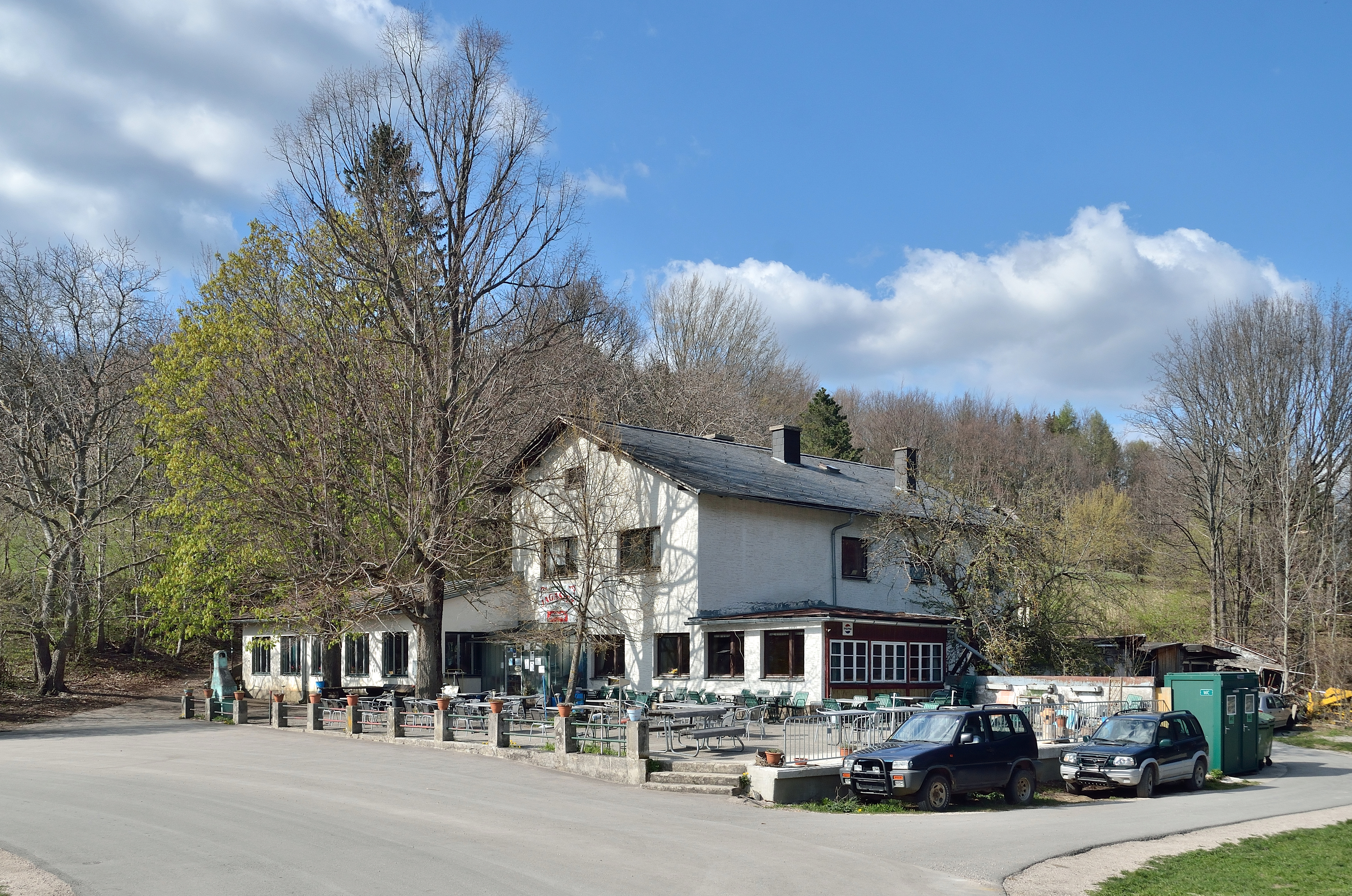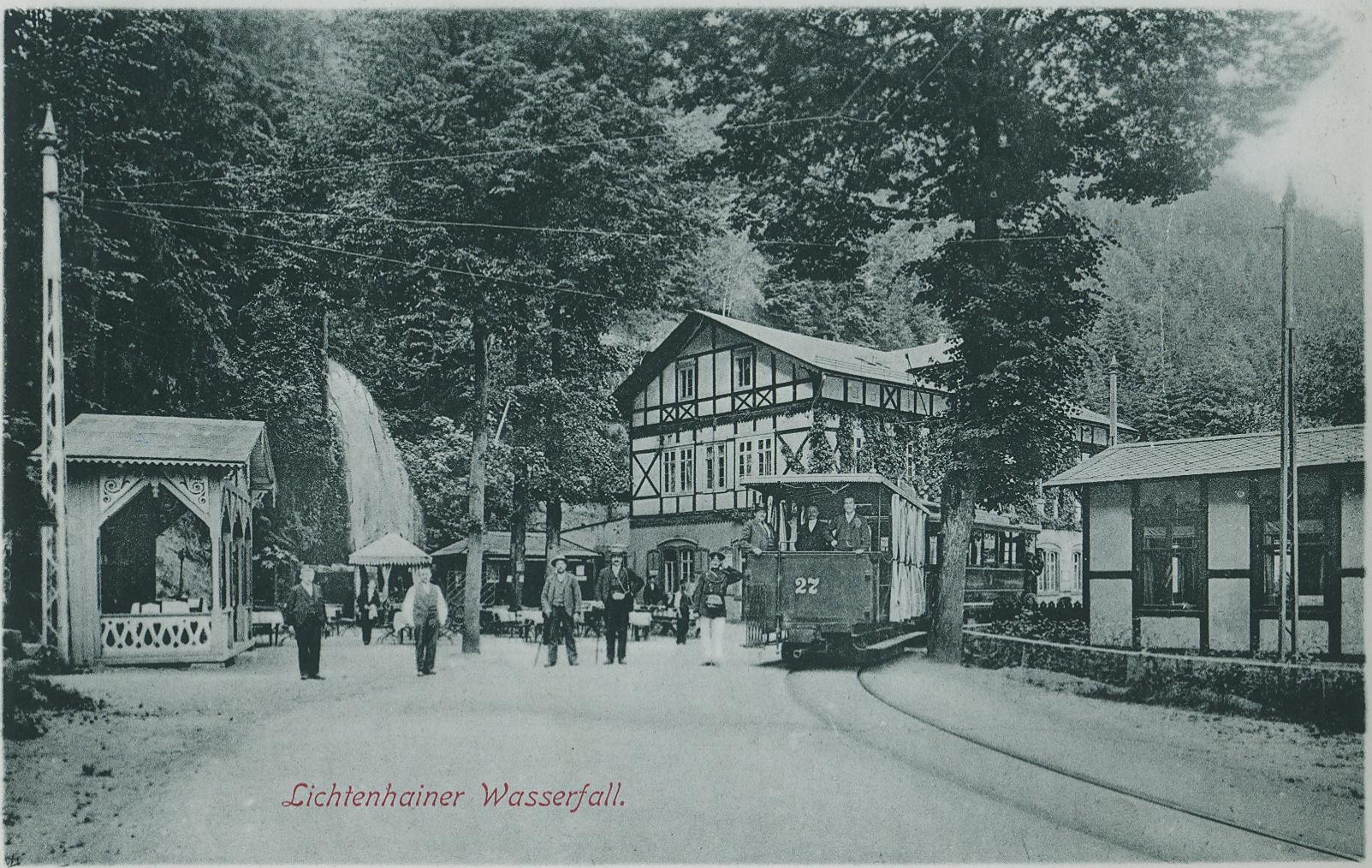|
Lichtenhain (Sebnitz)
Lichtenhain is a village in Saxony, Germany, situated in the district of Sächsische Schweiz-Osterzgebirge. It lies on the S154 road that links Bad Schandau and Sebnitz. It was one of the villages that composed the municipality of Kirnitzschtal, but, since 1 October 2012, it has been part of the municipality of Sebnitz. The tourist attraction of the Lichtenhain Waterfall lies to the south of the village. It is away on foot, but some away by road, and is best approached by the S165 road from Bad Schandau, or the Kirnitzschtal tramway The Kirnitzschtal tramway, also known as the ''Kirnitzschtalbahn'', is an electric tramway in Saxony, Germany. The line runs through the valley of the Kirnitzsch river in Saxon Switzerland, from the town of Bad Schandau up to the Lichtenhain W ... that parallels it. External links * Former municipalities in Saxony Sebnitz {{SächsischeSchweizOsterzgebirge-geo-stub ... [...More Info...] [...Related Items...] OR: [Wikipedia] [Google] [Baidu] |
Gasthof Amanger Lichtenhain
A Gasthaus (also called ''Gasthof'', ''Landhaus'', or ''Pension'') is a German-style inn or tavern with a bar, a restaurant, banquet facilities and hotel rooms for rent. Gasthäuser are typically found in smaller towns and are often family-owned. It is common for three generations of a family to work together in such an establishment, and many have been owned by the same family for generations. Gasthäuser are common in Germany, Austria, Switzerland, and other countries in Europe around Germany. Some are decorated with mural paintings (called Lüftlmalerei) depicting fairy tale stories or local legendary figures. Etymology Specifically translated a Gasthaus means "guest house" in German. Gasthof is a variation of the word, Landhaus means "country house" (though is essentially the same concept, just in a rural setting) and Pension means "boarding house" or small hotel. Lunch and dinner (''Mittagessen und Abendessen'') are usually served to the public, but breakfast (''Frühstück'' ... [...More Info...] [...Related Items...] OR: [Wikipedia] [Google] [Baidu] |
Saxony
Saxony (german: Sachsen ; Upper Saxon: ''Saggsn''; hsb, Sakska), officially the Free State of Saxony (german: Freistaat Sachsen, links=no ; Upper Saxon: ''Freischdaad Saggsn''; hsb, Swobodny stat Sakska, links=no), is a landlocked state of Germany, bordering the states of Brandenburg, Saxony-Anhalt, Thuringia, Bavaria, as well as the countries of Poland and the Czech Republic. Its capital is Dresden, and its largest city is Leipzig. Saxony is the tenth largest of Germany's sixteen states, with an area of , and the sixth most populous, with more than 4 million inhabitants. The term Saxony has been in use for more than a millennium. It was used for the medieval Duchy of Saxony, the Electorate of Saxony of the Holy Roman Empire, the Kingdom of Saxony, and twice for a republic. The first Free State of Saxony was established in 1918 as a constituent state of the Weimar Republic. After World War II, it was under Soviet occupation before it became part of the communist East Ger ... [...More Info...] [...Related Items...] OR: [Wikipedia] [Google] [Baidu] |
Germany
Germany,, officially the Federal Republic of Germany, is a country in Central Europe. It is the second most populous country in Europe after Russia, and the most populous member state of the European Union. Germany is situated between the Baltic and North seas to the north, and the Alps to the south; it covers an area of , with a population of almost 84 million within its 16 constituent states. Germany borders Denmark to the north, Poland and the Czech Republic to the east, Austria and Switzerland to the south, and France, Luxembourg, Belgium, and the Netherlands to the west. The nation's capital and most populous city is Berlin and its financial centre is Frankfurt; the largest urban area is the Ruhr. Various Germanic tribes have inhabited the northern parts of modern Germany since classical antiquity. A region named Germania was documented before AD 100. In 962, the Kingdom of Germany formed the bulk of the Holy Roman Empire. During the 16th ce ... [...More Info...] [...Related Items...] OR: [Wikipedia] [Google] [Baidu] |
Sächsische Schweiz-Osterzgebirge
Saxon Switzerland-Eastern Ore Mountains (german: Sächsische Schweiz-Osterzgebirge) is a district (''Districts of Germany, Kreis'') in Saxony, Germany. It is named after the mountain ranges Saxon Switzerland and Eastern Ore Mountains. History The district was established by merging the former districts of Sächsische Schweiz and Weißeritzkreis as part of the district reform of August 2008. Geography The district is located between Dresden and the Czech Republic. In the southwestern part of the district the Eastern Ore Mountains, easternmost part of the Ore Mountains (″Erzgebirge") is found, the southeastern part of the district is named Saxon Switzerland, which is part of the Elbe Sandstone Mountains. The main river of the district is the Elbe. The district borders (from the west and clockwise) the districts of Mittelsachsen and Meißen (district), Meißen, the List of German urban districts, urban district Dresden, the district of Bautzen (district), Bautzen, and the Czec ... [...More Info...] [...Related Items...] OR: [Wikipedia] [Google] [Baidu] |
Bad Schandau
Bad Schandau (; hsb, Žandow) is a spa town in Germany, in the Sächsische Schweiz-Osterzgebirge district of Saxony. It is situated on the right bank of the Elbe, at the mouth of the valley of the Kirnitzsch and in the area often described as Saxon Switzerland. Geography Bad Schandau lies east of the Elbe right on the edge of the Saxon Switzerland National Park in the Elbe Sandstone Mountains; the National Park Centre is located in the town. The original town centre nestled on the steep, towering sandstone rocks on the right-hand, northern bank of the River Elbe and squeezed in places into the narrow valley of the Kirnitzsch. The town centre lies above sea level (HN) (market square), whilst its highest points lie over above sea level. A rural tram line, the Kirnitzschtal Tramway, accompanies the little river for several kilometres and offers access to the nearby walking area. Bad Schandau is about from the Czech frontier and southeast of Dresden on the railway to Děčí ... [...More Info...] [...Related Items...] OR: [Wikipedia] [Google] [Baidu] |
Sebnitz
Sebnitz (; hsb, Zebnica) is a town in the Sächsische Schweiz-Osterzgebirge district, in Saxony, Germany. Geography The town of Sebnitz lies in the valley of the river Sebnitz and its side valleys between 251 and 460 m above sea level between the mountains of Saxon Switzerland and the Lusatian Highlands. Topographically the town itself lies in the West Lusatian Upland, but lies right on the border with the Upper Lusatian Highlands. Because the natural region of Saxon Switzerland is also very close by, the countryside around the town is very varied. The municipality consists of the town Sebnitz itself, Schönbach (joined 1935), Hainersdorf (joined 1920), Hertigswalde (joined 1950), Hinterhermsdorf (joined 1998) and the former municipality of Kirnitzschtal (joined 2012), that itself consisted of the villages Altendorf, Mittelndorf, Lichtenhain, Ottendorf and Saupsdorf. History Sebnitz was first mentioned in a document of 1223/1241 outlining the borders between the kin ... [...More Info...] [...Related Items...] OR: [Wikipedia] [Google] [Baidu] |
Kirnitzschtal
Kirnitzschtal is a former municipality in the Sächsische Schweiz-Osterzgebirge district, in Saxony, Germany. Since 1 October 2012, it is part of the town Sebnitz. It had its administrative seat in Lichtenhain. The municipality was divided into the following 5 ''Ortsteile'': * Altendorf *Mittelndorf * Lichtenhain * Ottendorf *Saupsdorf Photogallery Image:Mittelndorf 2008.jpg, View of the Kirnitzschtal area from the Affensteine rocks Image:Lichtenhainer Wasserfall watherfall 002.jpg, Lichtenhain Waterfall Image:OVPS KTB 2.jpg, Kirnitzschtal Tramway at the Forsthaus halt near Mittelndorf See also *Kirnitzschtal Tramway *Lichtenhain Waterfall The Lichtenhain Waterfall is a waterfall formed by the Lichtenhainer village brook and is situated in the Kirnitzsch Valley in the Saxon Switzerland of Germany. The village of Lichtenhain lies to the north of the waterfall, and is away on foot ... References External links Sebnitz Populated places in Saxon Switzerland Form ... [...More Info...] [...Related Items...] OR: [Wikipedia] [Google] [Baidu] |
Lichtenhain Waterfall
The Lichtenhain Waterfall is a waterfall formed by the Lichtenhainer village brook and is situated in the Kirnitzsch Valley in the Saxon Switzerland of Germany. The village of Lichtenhain lies to the north of the waterfall, and is away on foot, but some away by road. William Lebrecht Götzinger, chronicler of the Saxon Switzerland, mentioned the waterfall in his 1812 work ''Schandau and its environments''. The original waterfall was not impressive enough for tourists, so the brook was dammed up by a pushable weir. Since the Kirnitzschtalbahn, a tramway linking the waterfall with Bad Schandau, was opened in 1898, hundreds of thousands of tourists have visited the waterfall. See also * Sebnitz * Mittelndorf * Bad Schandau Elevator The Bad Schandau Elevator is a passenger truss-tower elevator built in 1904 at Bad Schandau, a spa town in Saxony, Germany. The height of the elevator is , in an art nouveau-style steel framework tower, which has a diameter of at the ground an .. ... [...More Info...] [...Related Items...] OR: [Wikipedia] [Google] [Baidu] |
Kirnitzschtal Tramway
The Kirnitzschtal tramway, also known as the ''Kirnitzschtalbahn'', is an electric tramway in Saxony, Germany. The line runs through the valley of the Kirnitzsch river in Saxon Switzerland, from the town of Bad Schandau up to the Lichtenhain Waterfall, in the municipality of Sebnitz. The line is principally a tourist service, being the only tramway to serve a National Park in Germany, and uses historical rolling stock built between 1925 and 1968. The line is operated by the Regionalverkehr Sächsische Schweiz-Osterzgebirge GmbH (RVSOE). This company also operates local and regional bus services in Saxon Switzerland and the adjoining ''Osterzgebirge'' (Eastern Ore Mountains), together with boat services on the Elbe river. History The first plans for the line were introduced in 1893. These were for a tramway from Bad Schandau to Kirnitzschschänke (now in the Czech Republic). The decision on the form of propulsion to use was controversial, with both steam locomotives and e ... [...More Info...] [...Related Items...] OR: [Wikipedia] [Google] [Baidu] |
Former Municipalities In Saxony
A former is an object, such as a template, gauge or cutting die, which is used to form something such as a boat's hull. Typically, a former gives shape to a structure that may have complex curvature. A former may become an integral part of the finished structure, as in an aircraft fuselage, or it may be removable, being using in the construction process and then discarded or re-used. Aircraft formers Formers are used in the construction of aircraft fuselage, of which a typical fuselage has a series from the nose to the empennage, typically perpendicular to the longitudinal axis of the aircraft. The primary purpose of formers is to establish the shape of the fuselage and reduce the column length of stringers to prevent instability. Formers are typically attached to longerons, which support the skin of the aircraft. The "former-and-longeron" technique (also called stations and stringers) was adopted from boat construction, and was typical of light aircraft built until the ad ... [...More Info...] [...Related Items...] OR: [Wikipedia] [Google] [Baidu] |




